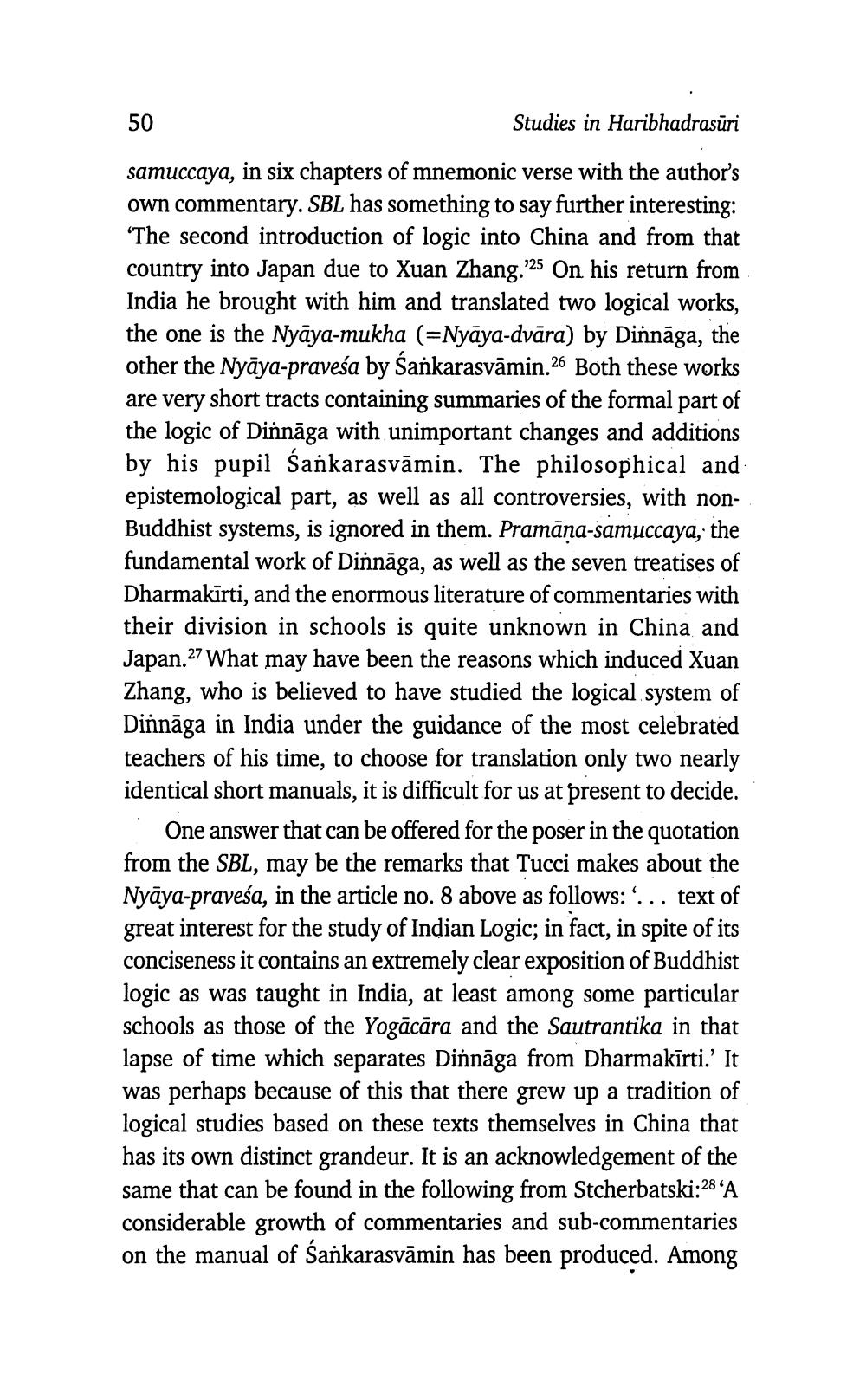________________
50
Studies in Haribhadrasuri
samuccaya, in six chapters of mnemonic verse with the author's own commentary. SBL has something to say further interesting: 'The second introduction of logic into China and from that country into Japan due to Xuan Zhang.'25 On his return from India he brought with him and translated two logical works, the one is the Nyāya-mukha (=Nyāya-dvāra) by Dinnāga, the other the Nyāya-praveśa by Sankarasvāmin.26 Both these works are very short tracts containing summaries of the formal part of the logic of Dinnāga with unimportant changes and additions by his pupil Sankarasvāmin. The philosophical and epistemological part, as well as all controversies, with nonBuddhist systems, is ignored in them. Pramāņa-samuccaya, the fundamental work of Dinnāga, as well as the seven treatises of Dharmakīrti, and the enormous literature of commentaries with their division in schools is quite unknown in China and Japan.27 What may have been the reasons which induced Xuan Zhang, who is believed to have studied the logical system of Dinnāga in India under the guidance of the most celebrated teachers of his time, to choose for translation only two nearly identical short manuals, it is difficult for us at present to decide.
One answer that can be offered for the poser in the quotation from the SBL, may be the remarks that Tucci makes about the Nyāya-praveśa, in the article no. 8 above as follows:'... text of great interest for the study of Indian Logic; in fact, in spite of its conciseness it contains an extremely clear exposition of Buddhist logic as was taught in India, at least among some particular schools as those of the Yogācāra and the Sautrantika in that lapse of time which separates Dinnāga from Dharmakīrti.' It was perhaps because of this that there grew up a tradition of logical studies based on these texts themselves in China that has its own distinct grandeur. It is an acknowledgement of the same that can be found in the following from Stcherbatski:28 “A considerable growth of commentaries and sub-commentaries on the manual of Sankarasvāmin has been produced. Among




